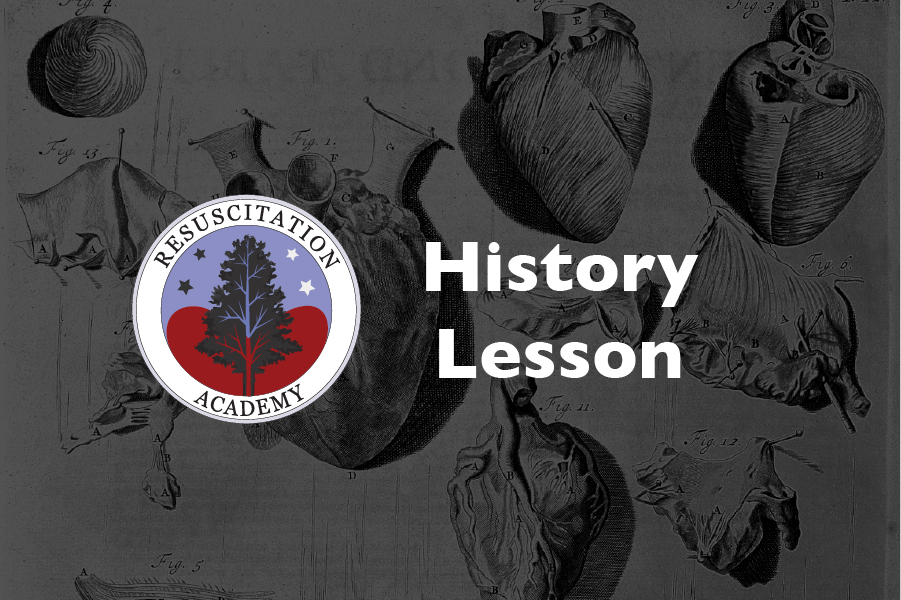Part 1: Out of Hospital Cardiac Arrest: The Best of Times and the Worst of Times
We have made great strides in treating out of hospital cardiac arrest, a leading cause of death among adults.
Every sudden cardiac arrest starts with clinical death (the person is unresponsive with no pulse or blood pressure) and the race is on to provide treatment to stop the progression to biological death and restore signs of life.
While every “save” is a life snatched from the jaws of death, the reality is that the vast majority of persons are not saved. Approximately 90% of persons who are treated for out of hospital cardiac arrest die.
Can we do better? The answer is an unequivocal “YES.” Many communities have increased survival rates two or three times the national average. Understanding how we arrived here and how we can improve requires a dive into the past, a look at present practices, and speculation about the future.
Resuscitation: The Best of Times and the Worst of Times.
Forgive us, Charles Dickens, for stealing your opening line from Tale of Two Cities, but it seems like a good way to start. It is the best of times because the number of individuals resuscitated from sudden death every year is historically remarkable – with thousands returned to family and friends. Yet, it is also the worst of times because of the vastly greater number of people who are not resuscitated (but could be). We have the knowledge and skills to do better. Using resuscitation programs with proven utility we can double survival. So, while we should celebrate what we have accomplished, let us look to future developments which hold the potential to dramatically raise survival rates.
Sudden cardiac arrest is one of the leading causes of death in the US and other high-resource countries. There are an estimated 250,000 out of hospital cardiac arrests per year in the US. This estimate comes from CARES (Cardiac Arrest Registry to Enhance Survival) and is extrapolated from the 30% of the population covered by CARES.
Underlying coronary artery disease is the cause of 83% of cardiac arrests.
Cardiac arrest is associated with several abnormal heart rhythms. These include asystole, pulseless electrical activity and ventricular fibrillation (VF). The focus here is almost exclusively on ventricular fibrillation, the most “optimistic” rhythm. This rhythm accounts for approximately 50% of all witnessed out of hospital cardiac arrests (including arrests occurring after arrival of EMS personnel) and is the rhythm with the highest likelihood of successful resuscitation.
The median age of men is 66 while the median age of women is 63.
50% of cardiac arrests are witnessed by a bystander.
70% of arrests occur at home.
Survival (discharged alive) following witnessed VF is considered the main indicator of a community’s cardiac arrest survival performance. This metric comes out of an international conference held at the Utstein Abbey, near Stavanger, Norway in 1990 and is termed the Utstein metric.
The vast majority of cardiac arrest survivors have good neurological recovery (CPR scores of 1 and 2).
Time to care is everything in the treatment of cardiac arrest, especially VF.
VF can only be converted to a normal rhythm with defibrillation. CPR prior to defibrillation increase the likelihood of success in two ways. It provides a small amount of blood to vital organs (such as the heart and brain and other organs) and thus prolongs the interval when defibrillation can be successful.
CPR when provided within 4 minutes is particularly beneficial since the blood retains vital oxygen for approximately that period of time.
The biggest impediment in improving out-of-hospital VF survival rates is the typical 10-minute (or longer) interval from call to 911 and arrival of EMS personnel with a defibrillator.
The situational reality of cardiac arrest and the logistics required to both start CPR (either by trained bystander or with T-CPR) within minutes of collapse and deliver defibrillation quickly is challenging. In this blog series we describe current strategies and potential strategies to achieve higher survival rates. But first a look into the past.
The current national survival rate for witnessed ventricular fibrillation is 33%.
The Resuscitation Academy











There are opportunities to significantly increase survival from out of hospital cardiac arrest. Implementation of existing standards and training programs for telephone CPR and high-performance CPR will do much to improve survival.